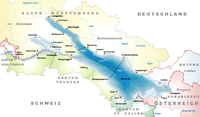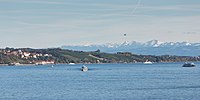Hohenkrähen
- View a machine-translated version of the German article.
- Machine translation, like DeepL or Google Translate, is a useful starting point for translations, but translators must revise errors as necessary and confirm that the translation is accurate, rather than simply copy-pasting machine-translated text into the English Wikipedia.
- Do not translate text that appears unreliable or low-quality. If possible, verify the text with references provided in the foreign-language article.
- You must provide copyright attribution in the edit summary accompanying your translation by providing an interlanguage link to the source of your translation. A model attribution edit summary is
Content in this edit is translated from the existing German Wikipedia article at [[:de:Hohenkrähen]]; see its history for attribution. - You may also add the template
{{Translated|de|Hohenkrähen}}to the talk page. - For more guidance, see Wikipedia:Translation.
Hohenkrähen (lit. 'High-Crows') is a mountain of volcanic origin in the Hegau region (Konstanz district) of southern Baden-Württemberg, Germany. The ruins of Hohenkrähen Castle are on the top of the mountain.
Location
This mountain is located on the Gemarkung of Duchtlingen (Hilzingen) between the villages of Duchtlingen, Schlatt unter Krähen and Mühlhausen-Ehingen.
Summit

The summit of Hohenkrähen is at 644 meters (2,113 feet) above sea level and contains the ruins of a castle of the same name.[1] The mountain top offers a good view of Hohentwiel and Mägdeberg mountains and the western part of Lake Constance.
Flora
There are different types of rare plants located on the mountain. These include: gray cinquefoil, Bleicher wallflower (Erysimum crepidifolium), mountain Alyssum, Festknolliger Corydalis, finger toothwort (Dentaria pentaphyllos), yellow sage (Salvia glutinosa) and mountain leek (Allium senescens). The mountain is also covered with old Tilia trees.[1]
References
- ^ a b Dobler, Eberhard (1986). Burg und Herrschaft Hohenkrähen (in German). Sigmaringen: Jan Thorbecke. pp. 1–387.
- v
- t
- e
- Austria
- Germany
- Baden-Württemberg
- Bodenseekreis
- Konstanz
- Bavaria
- Lindau
- Baden-Württemberg
- Switzerland
| Austria | |
|---|---|
| Germany |
|
| Switzerland |
|



- Bodanrück Peninsula
- Dominicans Island
- Entlibühl
- Galgeninsel
- Hoy
- Liebesinsel
- Lindau
- Mainau
- Mettnau Peninsula
- Reichenau
- Triboldingerbohl
- Vogelinsel
- Werd
- Appenzell Alps
- Hegau
- Hohenkrähen
- Hohenstoffeln
- Hohentwiel
- Schiener Berg
- Pfänder
- Seerücken
- Obersee
- Bay of Bregenz
- Constance Hopper
- Überlinger See
- Rhine Delta
- Untersee
- Gnadensee
- Markelfinger Winkel
- Rheinsee
- Wollmatinger Ried
- Zeller See
| Buildings |
|
|---|---|
| Touristic |
 | This Baden-Württemberg location article is a stub. You can help Wikipedia by expanding it. |
- v
- t
- e









